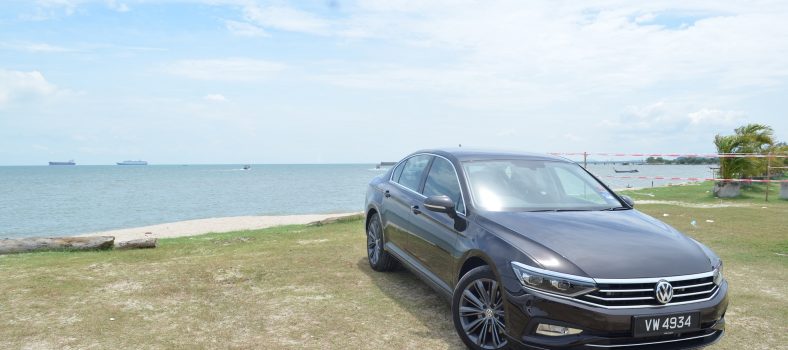.
In Malaysia, cars have become an essential part of our life. Whether it’s because of perceived poor public transport infrastructure, social status need, claustrophobia, work requirements, convenience or a pre-requisite before asking the girl’s hand in marriage, there is no denying that we need cars as much as the latest smartphone released in the market. Unfortunately, car prices aren’t cheap here and more often than not, a significant portion of our income goes towards servicing the car loan. Funny that we need to work therefore we need a car applies the other way around too; we need a car therefore we need to work.
.
It’s no secret that there is a rising number of non-performing loans (NPL) over the past few years and with the national household debt ratio to gross domestic product (GDP) at 87% and RM145bil of it being car loans, it is often the second biggest item on our monthly list of expenses. And among that figure, as much as RM2.33bil is being written off as NPLs; a figure that has been steadily increasing over the last couple of years.
.
While it can be argued that the house and vehicle are necessities if one were to live in Malaysia, I’m sure all of us have seen more than our fair share of people who, despite their meager income elect to buy luxury or branded cars, only to default in their loan a couple of months later. Some are fresh graduates who decree that their first car must be a continental hatchback (which would take up more than half their salary to pay). This buy-now-think-later mentality is miring a lot of Malaysians in perpetual debt and giving rise to inflation.
.
And inflation isn’t a pretty thing to look at. We’ve all been fed with assurance pills that inflation is well within ‘tolerable’ levels but seriously, when was the last time you felt that RM100 is enough to get you by the weekend these days. Because that’s what inflation does – with the same amount of money you have today, you can afford to buy less goods/services. In other words, the value of your cash gets smaller and more is needed to get the same stuffs you’ve always been enjoying. And we’re not even talking about excessive stuffs like the latest handphones or fancy designer bags. We’re talking about essentials, like:-
.
Housing loan/rental
Car loan
Food
Insurance
Electric bill
Water bill
Mobile telco (Maxis, Celcom, Digi, etc)
Parking and toll
Petrol
Entertainment (Unifi/Astro)
Children school fees
Baby sitter fees
Savings?
.
Once you fill in the data, you’d see how little one has at the end of the month for the typical Malaysian. In quite a few cases, one even has to go to negative and gets entrapped in credit card debts. And that’s not counting those ‘touch-wood’ situations like an unscheduled repair on the car, the house air conditioning, the red-color summon from your best friend’s wedding, duit Raya/ang-pow, etc. Small wonder why NPL numbers are rising. So what if the 2012 Malaysia Household Income Survey says the average gross monthly income of Malaysian household has risen to RM5,000?; every other item has gone up in prices and the only way to continue surviving is to compromise the quality of lifestyle you have. Go live in a smaller apartment, drive a smaller car and cancel that Unifi account and make full use of company WiFi to download torrent movies because you’ve got to remove the cinema from the list of weekly DOs with your other half. Whatever it is, getting more loans to plug one hole from another ain’t going to do you much good. Eventually, that boat one is rowing in is going to be so full of holes, it’ll just sink and that person can add bankruptcy to whatever title he has.
.
So, to bring the inflation level down, there’s a couple of things Bank Negara (BNM) can do but the most common is to increase interest rates to discourage people from borrowing money and spending them like it’s their parent’s money. Property prices are already sky high and tweaking the Base Lending Rate probably won’t have much of an effect since most people can’t afford to buy one anyways. But the car interest rates – now that’s something easily adjusted.
.
Which is exactly what appeared to have happened roughly 2 weeks ago when ‘some’ banks suddenly decide to up the rate by about 0.3 to 0.4 percent. As it happens, a friend of mine made a vehicle booking during that period and instead of being offered the usual 2.43 – 2.45%, the banks applied were all quoting 2.7 to 2.9% and when asked, they say it was a directive by Bank Negara. Bank Negara has since issued a statement yesterday, saying “Financial institutions set their own lending rates determined by various factors including a financial institution’s assessment of a borrower’s credit standing, market funding rates and competitive considerations” and denied issuing any directive to any bank.
.
Now, I don’t know about you but to have multiple banks simultaneously increasing rates and to a level that’s similar to one another smells of something premeditated and well-coordinated in its execution. So, if it’s not an official directive, could it have been a ‘suggestion’ by certain quarters? At the very least, if BNM has not set any directive, shouldn’t the Malaysia Competition Commission (MyCC) investigate this scenario as a form of price fixing. After all, since BNM has made an official statement claiming It Wasn’t Me, banks who have made the hike can’t point the finger at the central bank. Seems mightily convenient that just as the inflation rate reach a record high, some financial institution decides to throw their better rate offering out the window and compete from a position that’s inferior compared to those banks that are charging lower interest. Bear in mind, a 0.4% might not seem like a lot (or to put into perspective, 0.4% on a RM100,000 loan is just RM400 per year which works out to be an increase of RM33 per month) but in terms of percentage increase, it’s an interest rate increase of 16% if one base it on 2.4% previously offered. Damn, I’d be really happy if my boss increases my salary by 10% – Screw it! even then I’m still spending more than I want to!
.
Now, wrap your head around how much is 0.4% increase calculated on RM145billion automotive loans. Blows your mind, doesn’t it? And the funny thing is …. we have no freaking idea who started this domino effect
.
.
.




No Comment